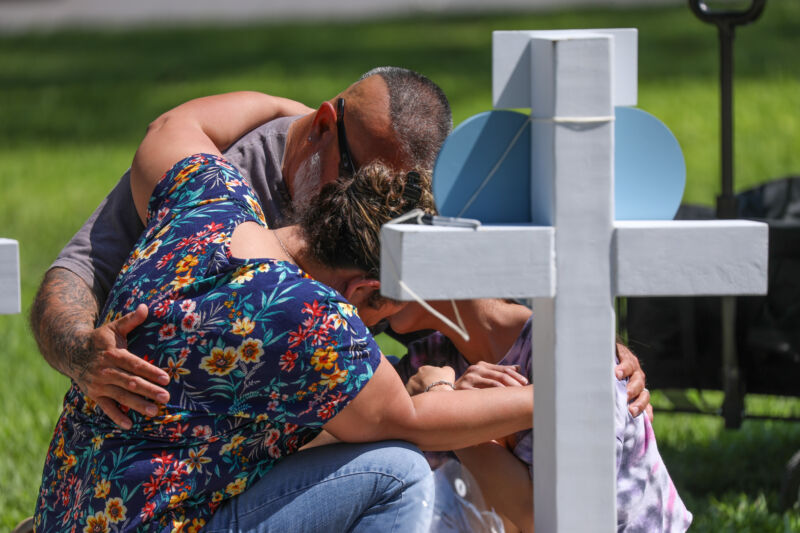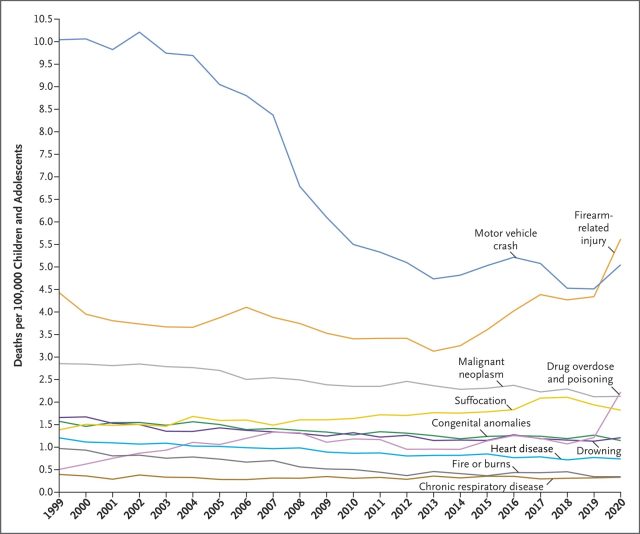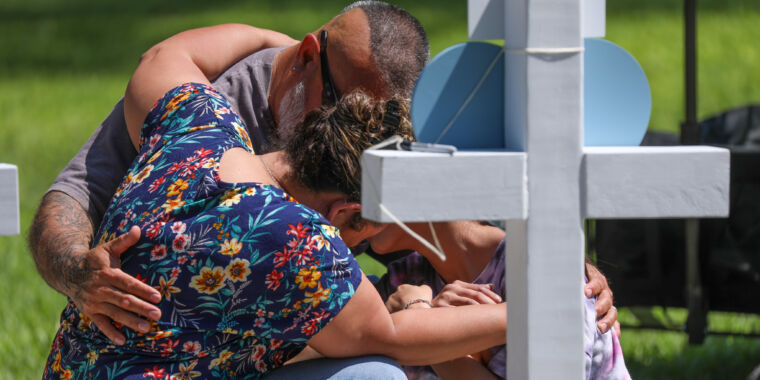
In the wake of yet another preventable American gun violence tragedy—one that involved the slaughter of 21 people, including 19 children in a Texas elementary school—doctors, nurses, hospital administrators, health experts, and scientists are once again demanding a long-overdue, evidence-based public health response to the uniquely American public health crisis of gun violence.
This is “very much our lane,” Dr. Bindi Naik-Mathuria, a pediatric surgeon at Baylor College of Medicine in Houston, told NBC.
She spoke vividly about the immediate impacts that AR-15-style weapons have on a human body—particularly the smallest ones. In the Uvalde, Texas school shooting this week, the gunman used an AR-15-style rifle (the Daniel Defense DDM4 V7 rifle), which he bought online. AR-15-style rifles are often used in mass shootings. They use a common military-caliber ammunition. The bullets don’t always pass cleanly through flesh, but can instead become “unstable” and tumble, causing devastating damage that can leave victims unrecognizable and with an exceptionally low chance of survival.
“It’s not just the hole you see on the outside. It’s a huge blast effect,” Naik-Mathuria told NBC. “You see completely shredded organs. Vessels are completely disrupted. There’s no way to salvage them.”
The state of some of the bullet-riddled bodies of the fourth-graders killed in this week’s shooting was so grave authorities were forced to use DNA testing to identify their small corpses.
“We have our hands inside these people, these children, trying to save them,” Naik-Mathuria added. “How can anyone tell us that it’s not our problem?”
Public health’s lane
In 2018, the National Rifle Association tried to do just that, tweeting “Someone should tell self-important anti-gun doctors to stay in their lane.” But medical and health experts continued to insist that this is, in fact, their lane, starting the online movement “#ThisIsOurLane.” And their demands for action have only grown louder as gun violence has not only continued, but increased.
In 2017, firearm injuries became the leading cause of death in children and teens, overtaking motor vehicle crashes’ more than 60-year streak of being the leading cause. Between 2019 and 2020, the relative rate of firearm-related deaths of all types (suicide, homicide, unintentional, and undetermined) among children and adolescents rose 29.5 percent, according to an analysis published May 19, 2022, in The New England Journal of Medicine. Those numbers were primarily driven by an increase in the crude rate of firearm homicides in children and teens, which rose by 33 percent.

“This is about protecting people’s health. This is about protecting kids’ lives,” Michael Dowling, president and CEO of New York-based Northwell Health, told Becker’s Hospital Review this week. “Gun violence is not an issue on the outside—it’s a central public health issue for us. Every single hospital leader in the United States should be standing up and screaming about what an abomination this is.”
Overall, the US is relatively awash in guns—and gun tragedies. American civilians own an estimated 393.3 million guns, or 120.5 per 100 residents, according to a 2018 report by the Small Arms Survey. The number is likely higher today. But, that ownership rate already makes the US the top-ranking country in the world for gun ownership. Among high-income countries, Canada has the second-highest rate of gun ownership, with 34.7 guns per 100 residents, less than a third of the US rate.








